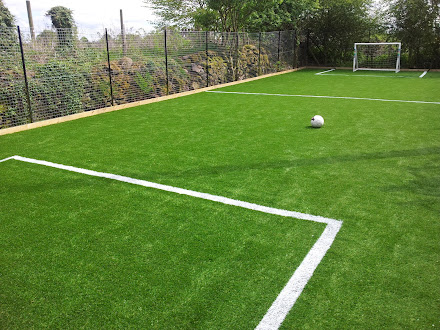The Advantages and Disadvantages of Artificial Grass
Artificial grass, also known as synthetic turf, offers several advantages and disadvantages for homeowners and businesses.
Advantages:
1. Low Maintenance: Artificial grass requires minimal upkeep, eliminating the need for mowing, watering, or fertilizing.
2. Aesthetically Pleasing: It provides a lush, green appearance year-round, regardless of weather conditions.
3. Durability: Synthetic turf can withstand heavy foot traffic and harsh weather, making it long-lasting.
4. Water Conservation: It reduces water consumption, contributing to water conservation efforts.
5. Allergy-Friendly: Artificial grass doesn't produce pollen, making it an excellent option for those with allergies.
6. Weed-Free: No weeds will grow through the synthetic surface, reducing the need for herbicides.
7. Pet-Friendly: Easy to clean and resistant to pet damage, making it a popular choice for pet owners.
8. Versatility: Suitable for various applications, including lawns, sports fields, and landscaping.
9. Cost Savings: While the initial investment can be high, it saves money over time on maintenance and water bills.
10. Green Year-Round: Maintains its green appearance even in dry or cold seasons.
Disadvantages:
1. High Initial Cost: The installation of artificial grass can be expensive compared to natural grass.
2. Heat Retention: Synthetic turf can get hot in direct sunlight, making it uncomfortable for barefoot activities.
3. Environmental Concerns: The production and disposal of synthetic turf materials can have environmental implications.
4. Less Natural Feel: Artificial grass lacks the sensory experience of real grass, including the smell and texture.
5. Limited Biodiversity: It doesn't support local wildlife and insects as natural grass does.
6. Potential for Fading: Over time, the color of artificial grass may fade due to UV exposure.
7. Infrequent Replacement: Eventually, synthetic turf will need replacement, incurring additional costs.
8. Installation Challenges: Proper installation is crucial, and DIY installation can be complex.
9. Infill Concerns: The infill material used in artificial grass may raise safety and health concerns.
10. Non-Renewable Resource: The production of synthetic turf relies on non-renewable resources, like petroleum-based plastics.
When considering artificial grass, it's essential to weigh these pros and cons to determine if it suits your specific needs and circumstances.




Comments
Post a Comment